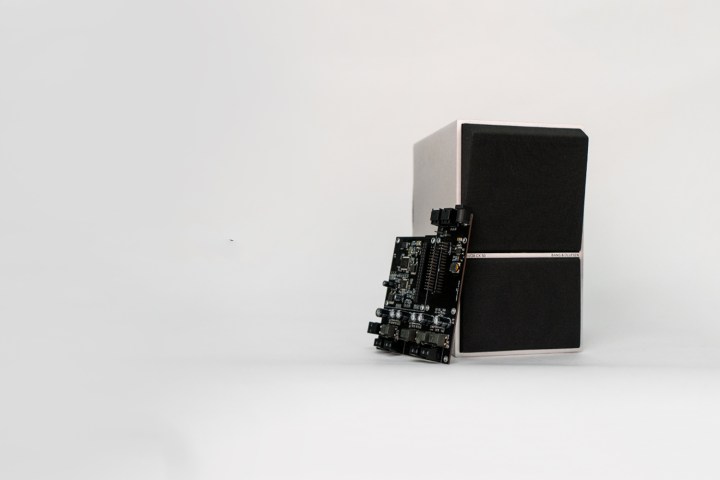
Acclaimed speaker manufacturer Bang & Olufsen has announced a new partnership with Swiss digital audio company HiFiBerry that will allow DIY audio enthusiasts to easily transform their vintage B&O speakers into wireless audio workhorses.
Called the Beocreate program, the new open source project features a custom digital signal processing (DSP) board that works as a four-channel amplifier. Buyers install the board into their vintage speakers, and it allows them to implement wireless functionality.
Bang and Olufsen says the project is part of its long-term commitment to produce long-lasting products. The company has been making high quality speakers and speaker systems for nearly a century, and the new project should excite owners of vintage models who are looking to phase out more traditional wired setups in favor of something more modern.
“Bang & Olufsen is known for our design, sound, and craftsmanship, virtues that never really go out of style. And our speakers from the 70’s and 80’s represent this just as much as our current product portfolio,” said Bang & Olufsen’s chief intrapreneur, Anders Buchmann, of the project, “But with technology changing rapidly a lot of vintage speakers are stored away not being used or even thrown away. We wanted to change that, and this initiative is all about empowering our customers to bring those products back to life themselves with modern day features.”
The new board offers a 24-bit/192kHz digital-to-analog converter (DAC) and four channel amplifier that can offer up to 60 watts of sound, which is more than loud enough for most spaces. The device works as a stand-alone piece of equipment, but when combined with a Raspberry Pi, buyers can program the digital signal procession themselves, using Analog Devices’ SigmaStudio for PC.
So far, the companies have partnered to create individual guides for just two models: The classic Beovox CX50 and CX100 speakers, but guides for the Beovox RL2000 and RL6000 models are coming soon, according the the HiFiBerry website.
The kit (which doesn’t include a Raspberry Pi) costs $189, and is available now. While that may seem like a pretty penny to make speakers wireless, it’s actually a steal, especially when you consider the fact that it features an integrated 4-channel amp in addition to a high-fidelity DAC. In fact, many project-oriented audio enthusiasts may start looking around for some older B&O models, just for the opportunity to try the project out.
Editors' Recommendations
- Bang & Olufsen celebrates Lunar New Year 2023 with Silk Road-inspired limited editions
- Bang & Olufsen debuts waterproof Beoplay EX wireless earbuds
- Bang and Olufsen’s Beolit 20 sticks a wireless charger into a wireless speaker




